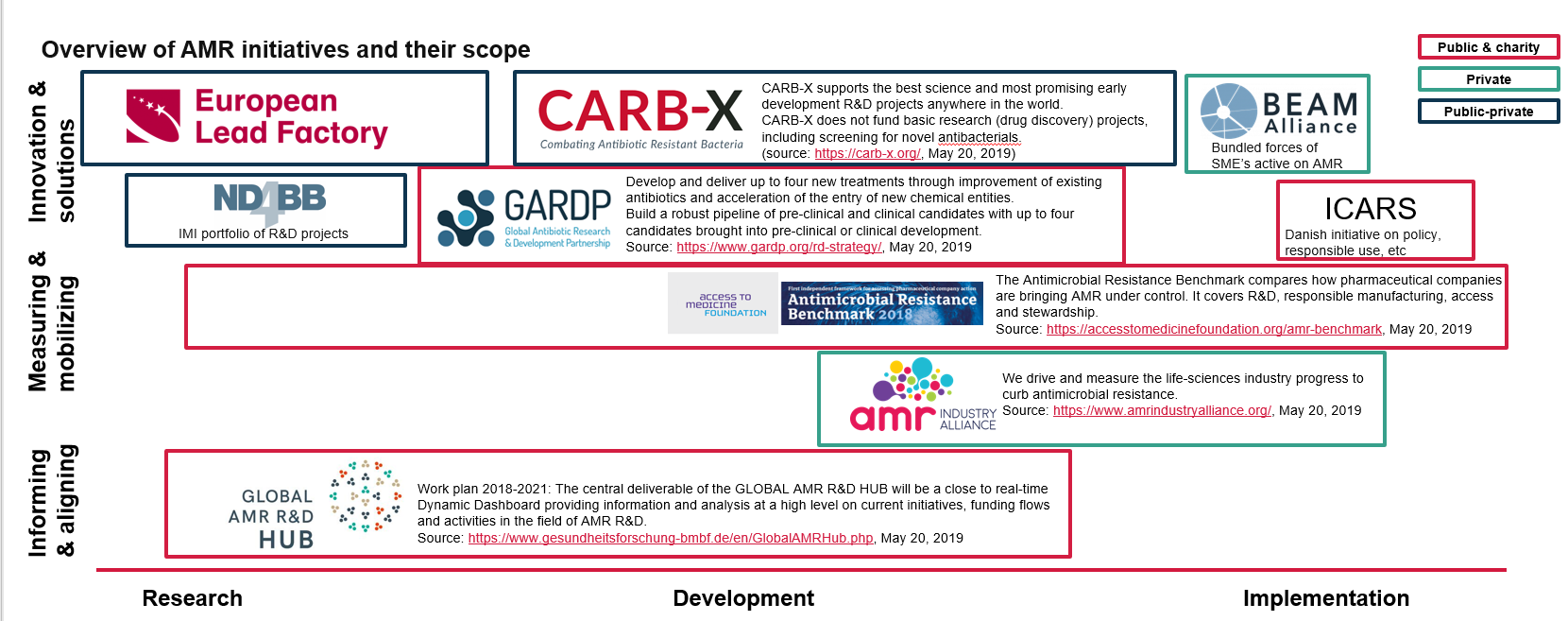 What is the role of economic investment in Research & Development in AMR?
What is the role of economic investment in Research & Development in AMR?
Discovering new antimicrobials and using them inherently poses the risk that those new drugs may develop resistance over time. Ideally, the newly discovered antimicrobials should be restricted for last resort use only, which makes the market unattractive for the private sector in terms of sales volumes.
Developing a new antibiotic can take over a decade and cost over €850 million (Drive-AB, 2018). It can generally be divided into two main phases: initial R&D development, which is done by SMEs and public institutions mostly, followed by drug development and testing, which is done by larger pharmaceutical companies. The AMR Industry Alliance reports investment of around 2 billion into AMR research across 22 companies in 2018 (AMR Industry Alliance, 2018). While a number of companies are producing antibiotics (IFPMA, 2015) (Access to Medicine Foundation, 2018), many of them are variations on existing antibiotics. While these are a safer bet for companies to invest in as less research is needed and approvals are faster due to similarities to existing approved drugs, these slightly modified antibiotics only overcome resistance for a short period of time. Research into novel antibiotic classes is very low.
As our last-resort antibiotics, such as colistin and carbapenem, lose their efficacy (CIDRAP, 2017) (Meletis, 2016) it is imperative that antibiotic R&D is prioritised so that we may have new and effective antimicrobials in time.


 Report
Report

